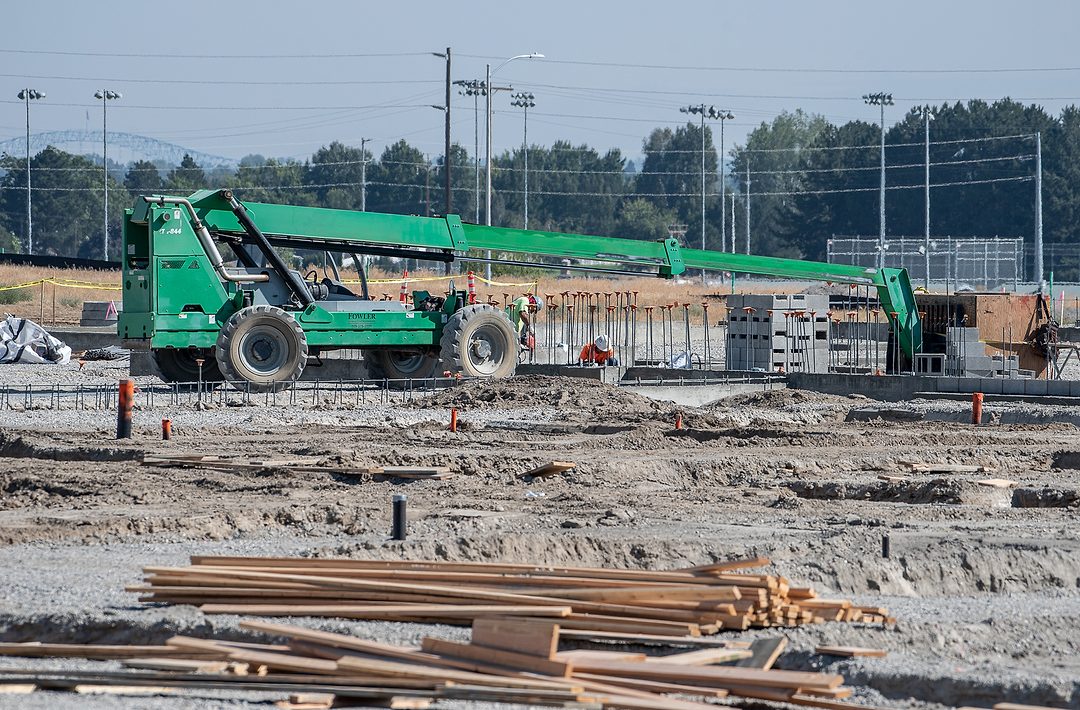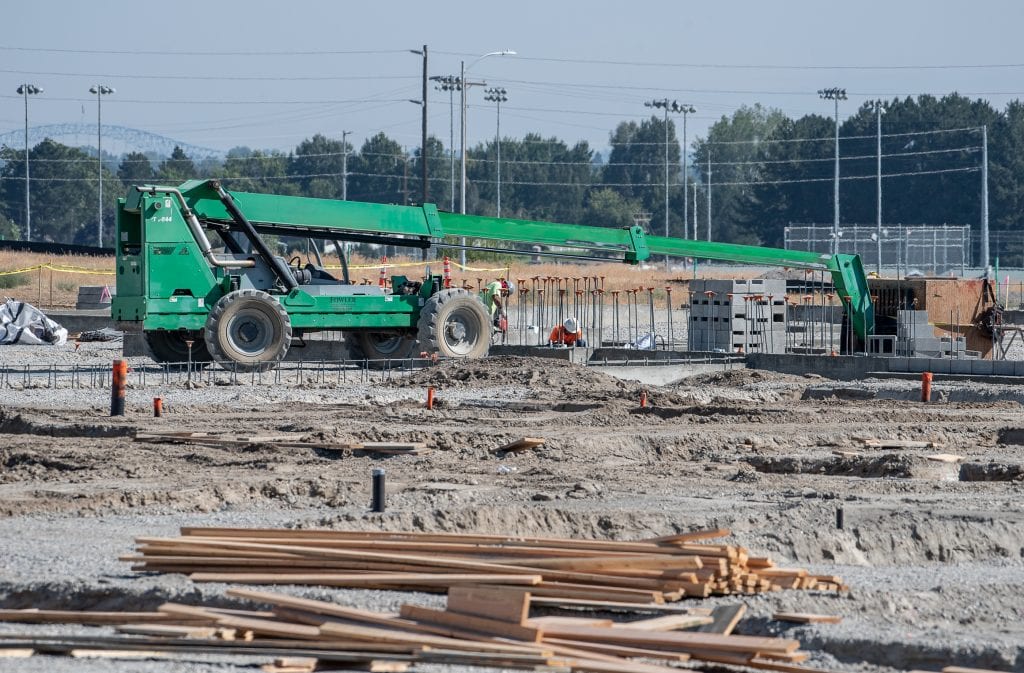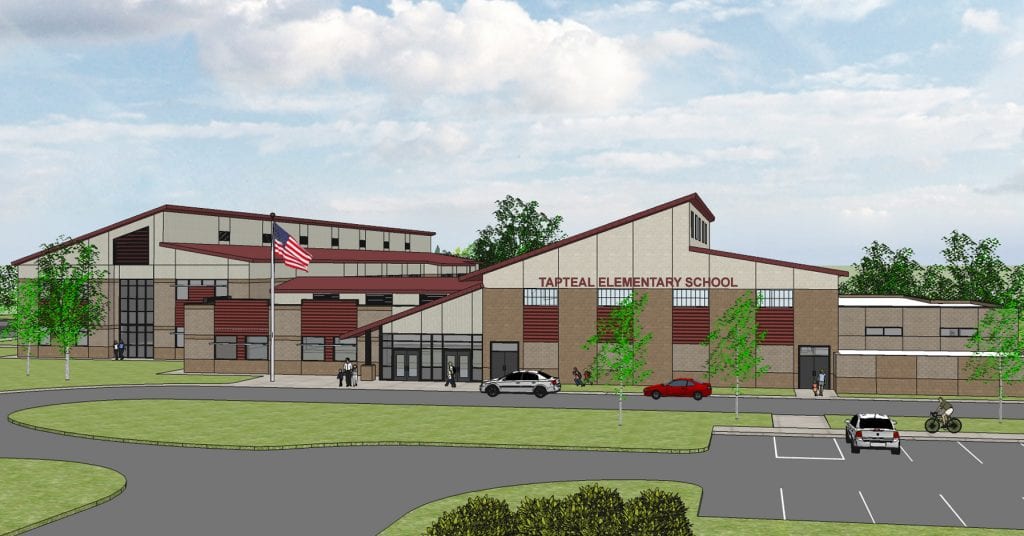
Home » K-12 education: more students require more schools
K-12 education: more students require more schools

October 30, 2018
The Tri-Cities’ three public school districts continue to grow.
And because of that, so do their capital projects.
Whether it’s new buildings, schools or facilities, the Kennewick, Pasco and Richland school districts have been busy completing projects from recently passed school bonds — and planning for future growth.
Some districts already are planning new bond measures to keep up with ongoing student enrollment growth.
Here’s a look at each of the three districts:
Kennewick School District
Kennewick School District’s student population continues to increase.
Student enrollment on Sept. 5, 2018, totaled 19,022, or 370 more students than recorded in October 2017. The October count is the official state count for the year, said Robyn Chastain, district spokeswoman.
The state Office Superintendent of Public Instruction projects the district will have 20,983 students, or an estimated 400 more each year, by 2022.
The district has already announced there will be a new bond measure before voters on Feb. 12, 2019.
“There is not a firm number yet on the bond amount,” Chastain said.
The district has a capital facilities plan in place that “waits for enrollment numbers to fully support the addition of a new school facility.”
That helps in maximizing state assistance dollars.
So the district will use portable buildings as much as it can until then.
Amistad Elementary, for instance, has 12 portables.
The highlights for the proposed bond will cover the replacement of Kennewick High, a remodel of the existing Art Fuller auditorium and the Lions Den gym; adding 12 classrooms each and enhancing the athletic facilities for both Kamiakin and Southridge high schools; replacing the current Amistad Elementary; replacing or remodeling Ridge View Elementary; and building an 18th elementary school.
The district has completed all five of the construction projects included in the 2015 bond that totaled $89.5 million, Chastain said. Those projects included rebuilding Desert Middle School; building Sage Crest Elementary; building Chinook Middle School; replacing Westgate Elementary; and opening Amon Creek Elementary.
Additional projects were added to the project scope, thanks to a state $51.1 million K-3 class size reduction grant in 2016. They included Amon Creek Elementary (a $23.5 million bond-and-grant project), the dual language Fuerza Elementary ($21.6 million), and the Amistad addition ($18 million).
Current projects include the Keewaydin Discovery Center addition, which opens in November 2018; the Mid-Columbia Partnership, opening in January 2019; the new Legacy High School, opening in spring 2019; and the Amistad Elementary addition, to be completed by August 2019.
Work on the new Kennewick High design should be finalized, and cost estimates should be done by October 2018.
Kennewick High was built in 1951, and then remodeled in both 1981 and 1991.
The district owns 572 acres of land, with schools on 85 percent of that land. The district is pursuing additional land for more school sites.
Kennewick High and Amistad are both eligible for state matching funds.
Estimates for the new Kennewick High are $105 million.
Amistad, built in 1992, will be replaced and connected to the addition under construction now. This project is estimated to cost $19 million.
The Kennewick High completion is tentatively planned for August 2021, pending bond approval.
The Kamiakin and Southridge additions and athletic enhancements, with a timeline of 2020-21, are expected to cost $5 million each, while the Ridge View ($24 million) and elementary school No. 18 ($26 million) projects should span 2021-24.
The district’s plan also calls for eight more renovations or new builds on middle schools and elementary schools between 2025 and 2029, with project costs ranging from $28 million to $45 million.
These proposed bond projects are pending school board approval.
Pasco School District
Pasco voters approved a $99.5 million bond measure in November 2017 that pays for six projects — elementary schools Nos. 16 and 17; replacing and expanding Stevens Middle School; adding a fourth middle school; safety and health improvements to school sites; and more and better transportation and maintenance facilities.
Total project costs are $149 million.
The state will match $44.5 million; $3 million for the Stevens site improvement was included in the 2013 bond; and $2 million will be kicked in from district impact fees, collected from new construction projects.
That reduces the total amount to $99.5 million.
Like the other school districts, Pasco’s enrollment is growing.
District spokesman Shane Edinger said Pasco’s 2018-19 student enrollment reached 18,000 after the Labor Day holiday.
“This is an overall increase of 168 students, or 0.94 percent over last year’s day-five count,” he said.
The breakdown has 10,081 students in kindergarten through sixth grade; 2,831 seventh- and eighth-graders; and 5,088 students in ninth- through 12th-graders.

The biggest jump was in seventh and eighth grades, where there are 161 more students than a year ago.
Randy Nunamaker, the district’s executive director of capital programs, said the district keeps a close watch on student enrollment.
“The state provides projections out five years,” he said. “But we also get multiple projections from private firms. We analyze both. It gives us a clearer perspective and projections.”
Nunamaker said elementary No. 16 is under construction and will be ready in time for the 2019-20 school year.
“It’ll be ready by August of 2019,” Nunamaker said. “It’s out on Road 84, north of Chiawana. Right now the schedule is we’re going out to bid for three other projects.”
That would be elementary school No. 17, off Burns Road, between Road 90 and Broadmoor Boulevard; middle school No. 4 (on the same site of elementary No. 17); and the replacement of Stevens Middle School.
Nunamaker said both elementary schools should handle 800 students each.
“Elementary school No. 17 will be ready in August of 2020, and middle school No. 4 should be ready by August of 2021,” Nunamaker said.
Stevens was built in 1960. The plan is to build the new Stevens on site as students attend in the old Stevens.
“The plan is to move into the new building in January of 2021,” Nunamaker said. “We’ll demolish the old Stevens.”
Then the district will complete the athletic fields.
“John Morgan (former Pasco High and district administrator) is working for us as project manager,” said Nunamaker. “He’ll be on the project. He’ll do equipment orders, athletic equipment for fields. It’s a small site, but we’re trying to get an actual track put in with a football field. I’m excited for the community there.”
Other projects included in the 2017 bond were security enhancements around the schools, and maintenance and transportation.
“We’re adding two maintenance bays,” Nunamaker said. “We’ve had just two since 1985. And we have 140 buses. The operations side has grown right along with our schools. We have to get kids to school safely.”
The 2017 bond also adds in $2 million for land acquisitions for future school sites.
“Pasco is projected to grow by 50,000 over the next 20 years,” Nunamaker said. “We have a great partner with the city to work with us.”
Nunamaker said the city gives the school district a heads up when plats of land are being discussed for new neighborhoods.
“When we see larger developments taking place, it tells us where we need to go start looking for property,” Nunamaker said. “Right now, we’re preparing property for a potential new high school site. We’re always looking for opportunities to buy land.”
It’s Nunamaker’s job to look down the road.
“We’re always looking five, 10, 20 years down the line,” he said. “I’d say we’re looking at another bond in the next five years. We’ve got groups looking now. We’re meeting with community builders (parents, staff, community members).”
So when schools run out of room, there will be more schools.
“People are coming,” said Nunamaker. “We just need to be prepared to take their kids in.”
Richland School District
In February 2017, Richland School District voters approved a $99 million bond issue to replace some schools, build new ones and improve athletic facilities.
The estimated total project cost is $141 million, and the district expects to receive $42 million in state assistance funds.
Like Kennewick and Pasco, the Richland School District is seeing rising enrollment numbers with 13,712 students.
“Enrollment is projected to increase by 200 to 300 students per year,” said Ty Beaver, spokesman for the Richland School District.
Richland opened the renovated Jefferson Elementary on George Washington Way in August 2018.
“Jefferson was the last project completed from the 2013 bond,” said Richard Krasner, Richland School District’s executive director of support services.
The 2017 bond will keep Krasner and his staff busy for the next five years.
“We usually have two or three projects going at the same time,” he said.
The projects include replacing Badger Mountain and Tapteal elementary schools.

“We’re in the design protocol right now,” Krasner said. “In June of 2019, we’ll start construction on Tapteal. It will open in August of 2020.”
A new elementary school is under construction on Belmont Boulevard in West Richland, which is within Richland School District boundaries.
Krasner said that school will open in August 2019 to serve Badger Mountain and Tapteal students, as the district will shuffle them around while their schools are renovated.
“But by August of 2021 this school will have full attendance,” he said.
Another new elementary school — No. 12 — will be built in east of the Dallas Road-Interstate 82 overpass, starting in 2022.
Other projects include auditorium improvements at Richland High.
“We’ve invited community members, students and staff and are asking them, ‘What do you guys want?’ ” Krasner said. “Then we can determine what we can do. We have to figure out the schedule for the auditorium. We’ll do that before the football fields.”
Both Fran Rish Stadium and Hanford High are getting field turf.
Fran Rish Stadium includes home side improvements, while Hanford gets athletic field improvements, including bleachers and restrooms.
“Soon we’ll start doing community input with the schools,” Krasner said. “We’ll let the booster clubs and community get some extra time to fund-raise and contribute. But Hanford will go first.”
In addition, the district’s new Teaching/Learning/Administrative Center will be built behind Leona Libby Middle School in West Richland.
Like Pasco and Kennewick school districts, Richland is looking for more land.
“I’m always looking for land,” Krasner said. “That’s part of my job. Any growth that’s going to happen is going to be west and south. We can’t go east because there is a river, and north you have Hanford.”
Another sign the district is growing? More buses.
“Every year I buy five new school buses for replacements,” he said.
He’ll likely keep doing this.
Beaver said this school year’s capital projects will help alleviate some enrollment pressure.
“Our capital projects budget for the 2018-19 school year is approximately $81 million,” Beaver said. “We do plan to present another bond to voters in 2021 or 2022. This would likely pay for construction of a third high school if approved by voters.”
Construction + Real Estate
KEYWORDS october 2018




